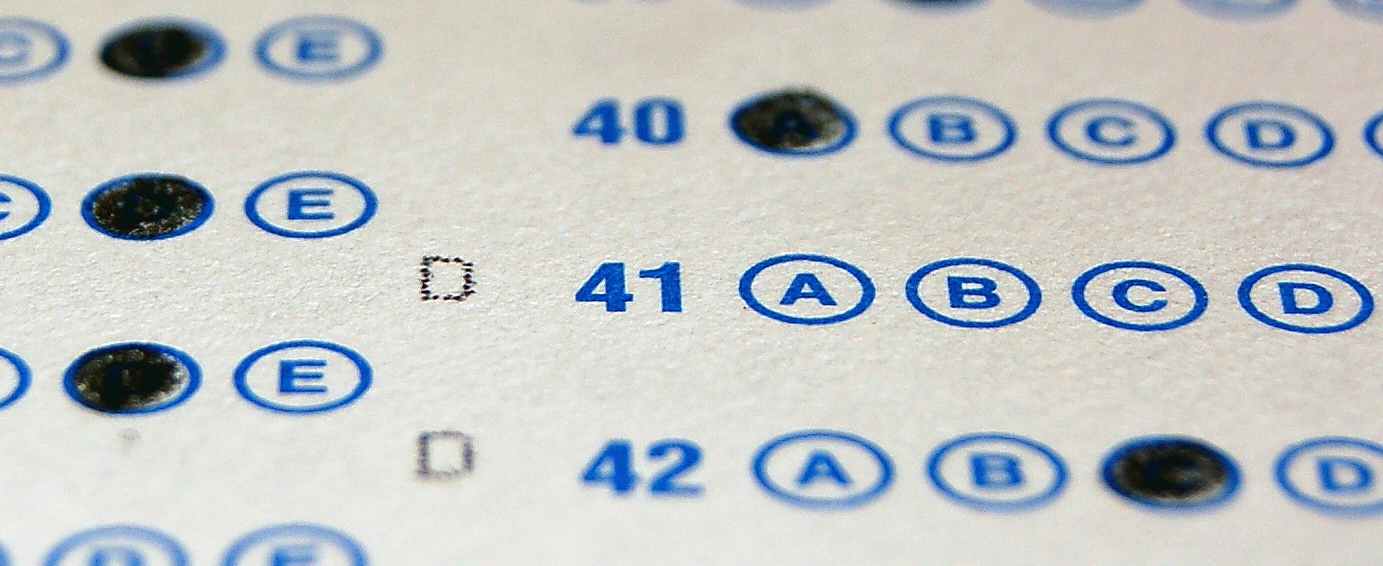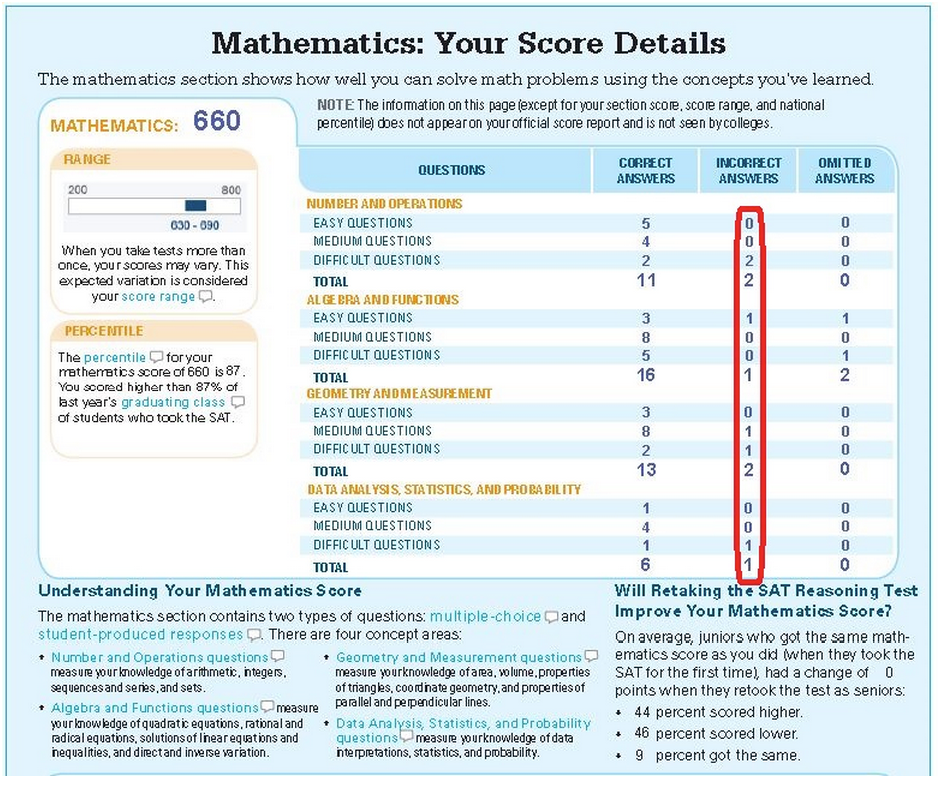-
Charlottesville
- (434) 296-5111
-
Great Falls
- (703) 759-3624
-
McLean
- (703) 288-2808
Georgetown Learning Centers Blog

Started from the Bottom, Now We’re Here: Improving Your SAT Math Score
If you got your SAT scores back and didn’t score as well as you would have liked on the math section, you’re not alone. Every year, we see many students in McLean, Great Falls, and Charlottesville who want to improve their scores on one of the most challenging sections of the SAT. However, you don’t need to be a savant to succeed if you follow these tips:
The Score Report
In order to improve your score, you’ll first need to understand what went wrong. When you receive your scores, you’ll also receive a document that details how you performed on the various sections. Let’s zero in on this student’s missed math questions in the middle column:
Notice any patterns? This student missed six questions total, four of which were classified as “Difficult.” Because the score report divides those problems into types, we can also see which topics this student struggled with most: Numbers/Operations and Geometry/Measurement.
Although all students receive official score reports just like the one above, few use them to their advantage. The scoring patterns described in the report allow you to target your weakest areas and alter your strategies to emphasize your strengths, which in turn allows you to study more efficiently. Don’t forget to examine it closely.
Target Your Studying
With knowledge of your weaknesses, you can then create a more precise study plan. We recommend checking out one of two different resources depending on how you scored. If you missed several questions in the medium and easy categories, you might benefit from a thorough review of the math section’s content. SAT Classes do this well by bringing students up to speed on the topics that they may have forgotten from earlier in high school. Classes also provide lots of exposure to different question types; because the strange phrasing of the SAT makes understanding what each question asks for difficult, you’ll need lots of practice interpreting problems in order to improve.
If you missed mostly difficult questions like the student whose results we examined above, there are two resources that would help you most. One is the official College Board SAT study book, and the other is individualized tutoring. Both options allow you to focus specifically on difficult problems. The College Board study book has ten practice tests with answer keys which rate questions by difficulty. By looking up the most difficult problems in each math section, you can avoid studying what you already know.
Individualized tutoring offers another great option for students who want to push through the 600 to 700 point barrier. With a knowledgeable instructor explaining techniques and feeding difficult problems to you at a manageable pace, you can avoid the pitfalls of practicing on your own, such as the frustration of confusing questions and hesitance about inventing your own strategies. An energetic, experienced instructor can make a huge difference.
Reevaluate Your Guessing Strategy
Many students lose points by guessing on questions they are likely to get wrong, but the SAT has a guessing penalty. Each incorrect answer results in a quarter-point deduction, so you can save yourself time, effort, and points by leaving certain questions blank. But which questions should you leave alone? The most difficult math questions on the SAT are typically the last three in each section. If you consistently get those wrong, be sure to leave them blank come test day.
However, it’s important to strike a balance. Some students are far too cautious and leave points on the table. A general guideline for knowing when to guess is the “eliminate two” rule; if you are able to eliminate at least two answer choices, feel free to pick at random. Once you’ve eliminated two answer choices, you’ve increased your odds of selecting the correct answer by chance to 33%, more than enough to outweigh the statistical disadvantage of guessing from five options.
Practice Makes Perfect
The final step in improving your score is keeping tabs on your progress. The official College Board SAT prep book has a wealth of practice problems, so if you wanted, you could take several math-only practice tests during your prep period. Doing so will keep you attuned to the pacing of the test and give you additional data to evaluate your development. For example, if you find that you still repeatedly get geometry questions wrong on practice tests, you can steer your focus towards that topic. Similarly, if you find that you run out of time in each section, you can lengthen each section and practice getting up to speed (set the clock to thirty minutes per section instead of twenty five, then decrease your time over the course of several weeks until you become comfortable with the SAT’s format).
Moving Forward with SAT Math
While each student is different in terms of learning styles and math skills, the steps outlined above are great ways for anyone to approach the goal of improved SAT math scores. Please feel free to contact us if you have questions about the right SAT math programs and we will be happy to assist you.

Matt Mason
Senior Associate Director
Georgetown Learning Centers
Would you like to share your thoughts?
Would you like to share your thoughts?
Leave a Reply
You must be logged in to post a comment.


0 Comments